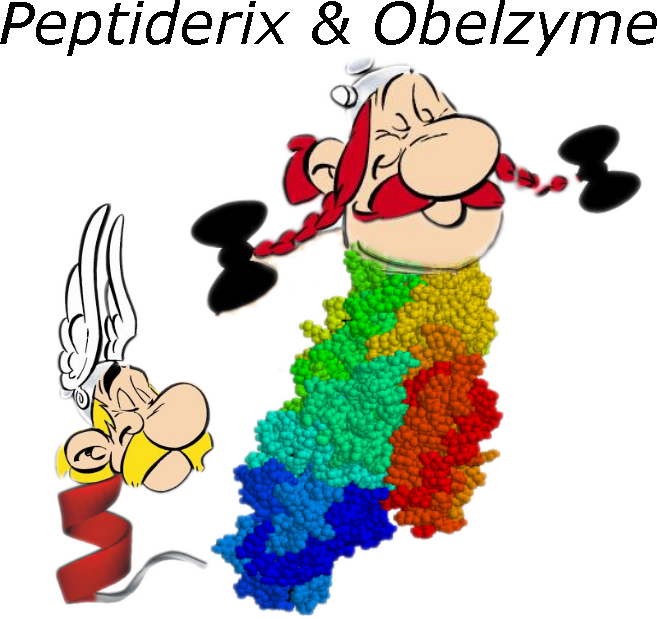Team:Imperial College London/M1
From 2009.igem.org

 Module 1 Overview
Module 1 Overview
Module 1, in which the protein of interest is made, is the first step in the transformation of our chassis into an inanimate pill. During this phase, strong gene expression drives the accumulation of the protein product in the cell cytoplasm.
The E.ncapsulator's versatility is exhibited by its compatibility with two hugely important classes of polypeptide: enzymes and peptides.
While all polypeptides are simply chains of amino acids, they are classified into subgroups on account of their size and functional properties. A peptide is a short chain built from a small number of amino acids. Enzymes on the other hand are much larger and serve catalyse reactions.
The E.ncapsulator offers distinct advantages to each of these types of protein.
Peptides = synthesis & selective protease protection
- Protein value = +++++++++ = first iGEM entry to provide a solution for mental issues = pain, arousal, depression
- Innovation = Generic linker gets around expensive peptide synthesis. Capsule protects from stomach proteases.
Enzymes = acid protection for 3d conformation
- Protein value = PAH = metabolic subcontraction from liver. Treatment for a genetic disease.
- Innovation = SDR for protease resistance
- Protein value = Cellulase = increase microbiome functionality
Although The E.ncapsulator is designed to be versatile with regard to which protein is to be produced, we have chosen two enzymes as demonstration, phenylalanine hydroxylase and cellulase.
Cellulase

Cellulose is a compound that is abundant in the human diet - it is what is commonly referred to as 'dietary fibre.' However, the human body is unable to degrade cellulose into glucose naturally, as it lacks the enzymes required to break down this fibrous material.
Cellulase is an enzyme that breaks down cellulose to glucose. By engineering The E.ncapsulator to produce this enzyme and delivering it to the small intestine, we would give the consumer the ability to digest dietary fibre. This would allow more energy and nutrients to be extracted from food; that which was previously unavailable.
More information on cellulase can be found here
Phenylalanine Hydroxylase
Phenylketonuria is a digestive disorder caused by an inability of the body to break down the amino acid phenylalanine. The amino acid accumulates in the blood, and can cause serious health problems for afflicted individuals. Current treatments for the condition revolve around following a strict very low protein diet.
Phenylalanine Hydroxylase (PAH) is an enzyme that breaks down the amino acid phenylalanine into tyrosine. By introducing this enzyme into the digestive system with The E.ncapsulator's unique drug delivery mechanism, we hope to treat the sufferers of PKU.
To find out more about phenylketonuria and PAH, click here.


| Next > Module 1: Genetic circuit |
 "
"






